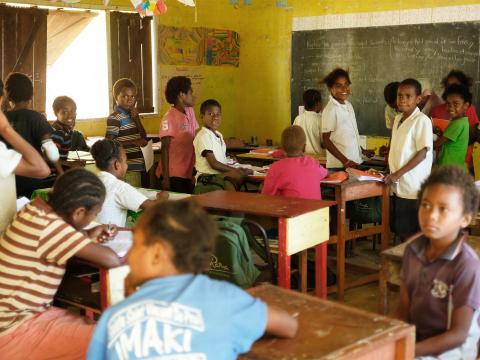Cleaner, happier learning

Imaki Primary School along the southern coast of the island of Tanna in Vanuatu enrols about 200 children in about 9 communities.
Due to the scarcity of water and the pressure on water levels because of the huge population in the school and the communities in the area which depended on the same water sources, regular acces to water was a challenge for students and their families.
Because of this each child is required to bring a bottle of water to school each day to wash their hands before meals and after using the toilet and to drink at school.
“When they brought no water, they were not able to practice good hygiene in school and would not be able to drink water if they were thirsty. As this would mean a shortage of water at home also, they would also turn up unbathed and wearing dirty clothes and we could see the dirt on the pages students’ books made by the dirt on their fingers and arms ,” said Pierre the Principal of Imaki Primasy school.
World Vision has supported Imarkak and imaki community to make the water system which had recurring malfunctioning issues, resilient to weather events like tropical cyclones and heavy rain which can cause flash flooding and landslide in the mountainous areas of South Tanna.
"Now that the students from Imarkak and Imaki have access to running water at home, water shortage will no longer be an issue for them. They will now have the opportunity to be clean, hydrated and enjoy learning," Stated Pierre.
Joe, a six year old student at Imaki Primary School says “When there is water I am glad because I don’t have to go down to the creek or the river to fetch water. I can wash my hands after using the toilet and before I eat, drink water, shower and share water with my friends at school.”
" It is so satisfying to see that the work we do can help children," said Jimmy Daniel, the project manager of the WASH project responsible for the work on the water system.
Funded by New Zealand government and private donations by members of the New Zealand public, the water system will eventually supply to 6 other villages in the area.